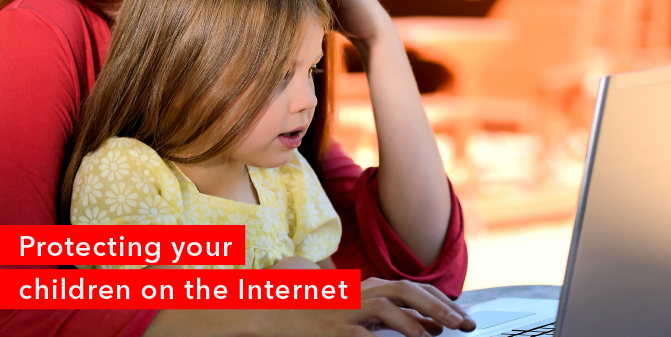Protecting your children on the Internet
When it comes to protecting your children in cyberspace the thought can seem daunting; yet we all know it is essential. You might think that banning the use of the Internet is the easiest and safest option, but with online access being so readily available your best line of defense is to arm yourself and your children with the right tools.
You need to know where and how your children are accessing the Internet be it at home, at school or via a smart device, in order to know how to start.
Treat being online just as you would real life and put the same safety measure in place.
Here are a few suggestions to help you get started:
1) Talk to your children and educate them
The first step in protecting your child is to talk to them about the Internet and start educating them on the do’s and don’ts when online. Tell them why they shouldn’t do things such as giving out personal information, accepting friend requests from people they don’t know, or opening emails from an unknown sender.
For younger children it may be helpful to give them real life examples as a frame of reference for example; don’t talk to strangers on the playground, this is the same as not accepting friend requests from people you don’t know; or if something is wrong find an adult and tell them, if you don’t like what you find online tell an adult.
Let them know what websites they can visit safely or what apps they are allowed to use freely. Should they have a question be open and available to help guide them.
2) Location of the connection
Ensure the computer or laptop your child uses to access the internet is set up in a high traffic area of the house, such as the lounge rather than in a bedroom or study. This way you will easily be able to keep an eye on what they are doing without them even noticing.
3) Limit the time spent on the Internet
Set a limit on how much time is spent on the Internet. Depending on your child’s age and what they are doing online the amount of time they spend on the Internet will differ. As a parent you will need to decide on what you are comfortable with.
You may also be interested in a previous article we wrote; Should your kids be spending less time online.
4) Check the privacy settings
Check the privacy and security settings on the computer or mobile device as well as the search engine and any third party applications they are using.
Top tip: It is a good idea to create separate user profiles on a shared computer to help manage the parental setting for each user more efficiently.
For children who use smart devices remember to check the settings and enable any restrictions necessary to apps or web browsing.
You can also take a look at Google preferences on your Internet browser. By adjusting the settings you can greatly reduce the opportunity for your child to stumble upon unwanted content.

5) Know what they are doing
It is essential that you know what your children are using the Internet for. Are they on social media sites such as Facebook, Twitter or Instagram, playing games or researching a school project?
If you don’t know about a website or platform they are using, sign up for your own account. See what information is asked of you and what the function of the site is. By educating yourself as to the virtual playground your children are playing in, you will be better equipped to keep them safe.
6) Surf with them
Spend time surfing the Internet with your children, especially younger ones. This helps you guide their experience as well providing time for you to teach them as you go along.
When it comes to your children and the Internet open and understanding communication is key. Let your children know that you are there to help guide them safely rather and restrict them.



